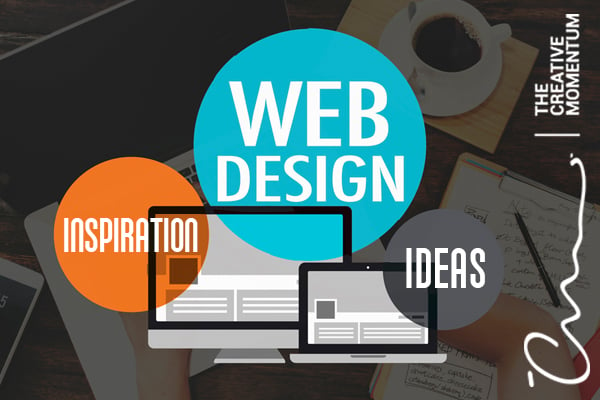How to Effectively Integrate Visual Appeals and Capability in Internet Style
When designing a website, you require to strike a balance between visual appeals and performance. It's not almost looking excellent; your layout must likewise serve a purpose and guide individuals efficiently. By concentrating on simpleness and instinctive navigation, you can produce an appealing experience. What elements truly boost use while preserving aesthetic allure? Allow's check out the crucial principles that can cause a harmonious blend of elegance and function.
Understanding the Value of Aesthetics and Capability
When you create a site, understanding the balance between looks and capability is necessary for developing a reliable user experience. A visually attractive website grabs attention, yet it's the performance that keeps users involved. Site visitors will swiftly lose interest and leave.Consider your target audience and what attracts them in if your site looks excellent yet is tough to browse. You intend to produce a style that mirrors your brand name while making certain convenience of usage. Structured designs, user-friendly navigation, and clear telephone calls to action can improve both looks and performance.

Concepts of Reliable Internet Layout
To develop an efficient web design, you need to stick to a number of key principles that improve both user experience and visual charm. Prioritize simplicity; a clean design helps individuals browse conveniently. Utilize a constant color design and typography to keep comprehensibility across your site. This cultivates knowledge and trust.Next, assure your style is responsive. Individuals gain access to sites on various devices, so your design must adapt flawlessly. Focus on aesthetic power structure; emphasize crucial aspects with positioning, dimension, or color to direct users' focus.Finally, include ample white space. It avoids clutter and makes material much more digestible. Keep in mind, reliable web style equilibriums looks and capability, so every style choice should serve a function. By following these principles, you'll produce a website that's not just aesthetically enticing yet also easy to use, eventually maintaining visitors involved and urging them to return.
Focusing On Individual Experience
When focusing on user experience, you'll wish to begin by recognizing what your users really require. Streamlining navigating design can make a huge difference in just how conveniently they locate what they're looking for. Improving visual pecking order aids assist their attention to the most crucial aspects on your site.
Understanding Customer Requirements
Recognizing customer demands is necessary for creating an engaging internet experience that keeps site visitors returning. To achieve this, you have to determine the objectives and choices of your target market. Begin by carrying out individual research, like studies or interviews, to gather understandings on what users value most. Take note of their discomfort factors and obstacles when communicating with comparable web sites. This info permits you to tailor your style, guaranteeing performance straightens with individual assumptions. Additionally, take into consideration creating individual identities that represent various sectors of your audience, assisting you envision their demands during the design process. When you focus on understanding individual needs, you create a site that not only looks great however also supplies a smooth, satisfying experience that promotes commitment.
Streamlining Navigation Layout

Enhancing Aesthetic Hierarchy
A strong visual hierarchy is essential in guiding individuals via your internet site and guaranteeing they engage with crucial web content. To attain this, utilize spacing, dimension, and color strategically. Make important aspects like headings larger and bolder than body message, attracting focus quickly. Utilize contrasting shades to highlight contact us to activity, motivating clicks. In addition, utilize enough white room to separate areas, making material absorbable and inviting.Consider the circulation of information; set up aspects realistically, leading individuals' eyes from one factor to the following. Usage visual hints, like arrowheads or lines, to route attention. By focusing on visual hierarchy, you improve user experience and enhance the probability of conversions, ensuring your web site is both cosmetically pleasing and functionally efficient.
Color Theory and Its Influence On Usability
While choosing the appropriate shades for your website may appear like a small detail, it considerably affects usability and individual experience. Color affects how customers perceive details and can hinder or enhance navigating. As an example, contrasting shades can help crucial elements stand out, making it easier for site visitors to locate what they need.Additionally, take into consideration the psychology of colors: blue often motivates trust, while red develops urgency. Recognizing your target audience can lead your color choices, guaranteeing they resonate well.Moreover, consistent color pattern assist build brand identification, making your site extra memorable. However, be cautious-- way too many shades can overwhelm customers. Adhere to a restricted combination that complements your material and maintains clarity.Incorporating ease of access is likewise crucial; validate your shade combinations are pleasant for those with aesthetic problems. By attentively using shade theory, you'll boost use and create an extra appealing individual experience.
Typography: Balancing Design and Readability
Shade choices set the phase for your internet site, yet typography plays a just as essential role in boosting user experience. You desire your text to communicate clearly while additionally showing your brand name's personality. Begin by choosing font styles that are not just appealing yet additionally understandable. Sans-serif font styles usually function well for electronic displays, as they're simpler to read at different sizes.Maintain a power structure by utilizing different typeface sizes and weights; this overviews individuals through your web content easily. Think about line spacing and letter spacing; also limited can discourage viewers, while too loose YOURURL.com can disrupt the flow. Restriction your font style choices to two or three to maintain the layout cohesive.Finally, constantly check your typography throughout various gadgets and web browsers. What looks excellent on one screen might out an additional. Stabilizing design with readability assurances that your message resonates, keeping your target market informed and involved.
Receptive Design: Making Looks Work on All Gadgets
To ensure your site looks excellent on any kind of device, you'll require to embrace receptive layout principles. This approach guarantees your site adapts to various screen dimensions, providing an ideal individual experience. Start by utilizing liquid grids and flexible images that scale seamlessly. Rather than repaired dimensions, choose portions and relative units, allowing your layout to adjust dynamically.Next, carry out media inquiries in your CSS. These allow you apply different designs based upon gadget characteristics, like screen width. In this manner, you can preserve visual charm while assuring functionality.Don' t fail to remember regarding touch targets; ensure switches and web links are very easy to tap on smaller sized screens. Prioritize essential web content, so customers can quickly browse your website despite their gadget. By concentrating on these elements, you'll develop an engaging, aesthetically appealing experience that satisfies the needs of all individuals, whether they get on a smart device, tablet, or desktop computer .
Carrying Out Use Testing for Continual Improvement
To enhance your website design, you require to establish clear usability goals that straighten with individual needs. By carrying out customer tests, you can gather useful comments on exactly how real individuals engage with your site. Evaluating these outcomes will certainly help you make educated improvements and produce an extra effective customer experience.
Specifying Usability Goals
While visual appeals can attract customers in, specifying usability goals is important for guaranteeing their experience continues to be satisfying and smooth. Start by recognizing what you desire users to achieve on your site (website design london Ontario). Consider their requirements, jobs, and actions. Are they searching for information, making a purchase, or registering for a newsletter? Develop clear criteria to gauge success, like task conclusion prices or time on task. Focus on user-friendly navigating, obtainable content, and receptive layout to boost usability. Regularly revisit these objectives as individual assumptions progress. By defining functionality objectives, you produce a structure for assessing and enhancing your web site's efficiency. This emphasis on usability not just improves individual fulfillment however additionally strengthens the total efficiency of your design
Conducting Customer Examinations
Performing user tests is crucial for improving your site and guaranteeing it fulfills your target market's requirements. Beginning by determining your target users and creating an examination plan that details your objectives. Utilize a mix of measurable and qualitative approaches, such as studies, meetings, and task-based observations, to collect extensive comments. Welcome participants to browse your website while you observe their communications and keep in mind any troubles they encounter. Urge open discussion to catch their thoughts and sensations concerning the layout and functionality. Keep sessions short and concentrated, ensuring you like this cover vital areas without frustrating individuals. Ultimately, make sure find more to record all findings, as this details will be invaluable for making educated style decisions that enhance both aesthetic appeals and functionality.
Assessing Test Outcomes
Just how can you successfully analyze the outcomes of your use examinations to drive continuous renovation? Start by categorizing comments right into typical themes. Look for patterns in user habits that highlight pain points or areas for improvement. Usage measurable data, like task conclusion rates and time on job, to gauge functionality objectively. Do not fail to remember to think about qualitative understandings from user comments; they usually disclose underlying concerns that numbers can not show. Focus on the most impactful findings and develop workable things for your layout group. Remember, it has to do with iterating-- execute adjustments, then examination once more. This cycle of screening, analyzing, and refining assists you balance aesthetics and functionality, ensuring your site satisfies customer requirements effectively while preserving visual allure.
Frequently Asked Inquiries
Exactly how Do I Choose the Right Shade Scheme for My Internet site?
To select the appropriate shade palette for your internet site, consider your brand's character, target audience, and emotional influence (website design london Ontario). Usage color psychology, develop harmony, and warranty readability. Examination combinations to see what reverberates finest with site visitors
What Equipment Can Aid With Website Design Visual Appeals and Performance?
You can utilize devices like Adobe XD, Figma, and Map out to enhance your internet layout's appearances and capability. These systems supply intuitive interfaces, cooperation functions, and pre-made templates to enhance your imaginative procedure and boost your styles.
Just How Can I Integrate Animations Without Compromising Functionality?
To include animations without jeopardizing functionality, focus on refined results that improve user experience. Use CSS animations for smoother communications, guarantee fast load times, and test on different devices to keep efficiency while adding aesthetic allure.
What Prevail Mistakes to Prevent in Website Design Aesthetic Appeals?
When developing, stay clear of chaotic designs, inadequate shade selections, and inconsistent font styles. Don't neglect mobile responsiveness, as it can estrange individuals. Verify your design straightens with your brand name, developing a smooth experience that engages visitors successfully.
Exactly how Commonly Should I Update My Website's Style for Optimal Visual Appeals?
You should upgrade your web site's design every 1-2 years to stay on par with trends and preserve suitable looks. Consistently restoring visuals helps engage warranties and site visitors your site continues to be straightforward and appealing. When you design an internet site, comprehending the equilibrium in between appearances and performance is vital for developing an efficient customer experience. To develop an efficient internet style, you require to stick to several key concepts that boost both individual experience and aesthetic charm. Customers accessibility web sites on different tools, so your layout needs to adapt effortlessly. When prioritizing customer experience, you'll desire to start by recognizing what your customers absolutely need. Beginning by conducting customer research, like meetings or studies, to collect understandings on what users worth most.